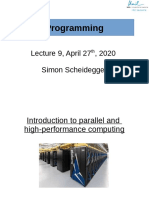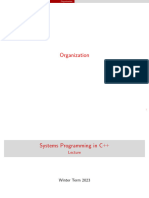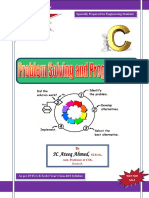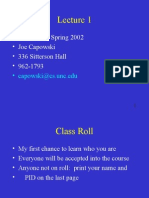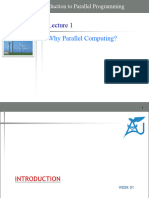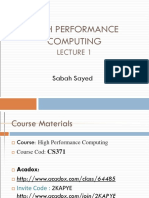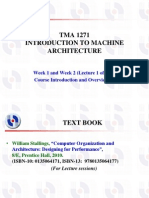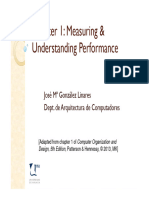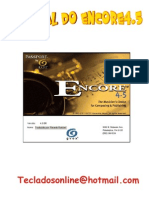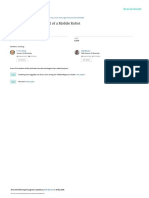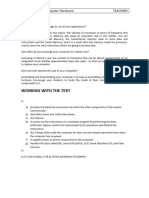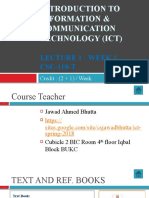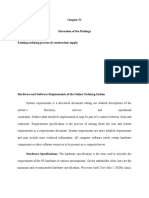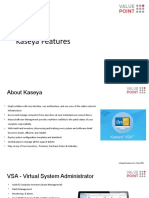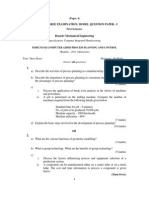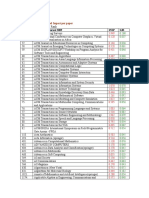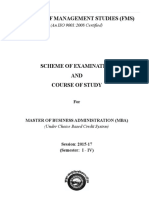0% found this document useful (0 votes)
163 views22 pagesHPC Course for MSc Students
The document provides an introduction to high performance computing (HPC). It outlines the goals of understanding hardware components, operating systems, and writing efficient parallel programs. The course covers modern CPU architecture, memory hierarchies, operating systems, programming languages, optimization techniques, and parallel programming with OpenMP and MPI. It is organized over multiple sessions covering these topics through lectures, exercises and discussions to help participants optimize their numerical codes to run efficiently on HPC systems.
Uploaded by
Muhammad BilalCopyright
© © All Rights Reserved
We take content rights seriously. If you suspect this is your content, claim it here.
Available Formats
Download as PDF, TXT or read online on Scribd
0% found this document useful (0 votes)
163 views22 pagesHPC Course for MSc Students
The document provides an introduction to high performance computing (HPC). It outlines the goals of understanding hardware components, operating systems, and writing efficient parallel programs. The course covers modern CPU architecture, memory hierarchies, operating systems, programming languages, optimization techniques, and parallel programming with OpenMP and MPI. It is organized over multiple sessions covering these topics through lectures, exercises and discussions to help participants optimize their numerical codes to run efficiently on HPC systems.
Uploaded by
Muhammad BilalCopyright
© © All Rights Reserved
We take content rights seriously. If you suspect this is your content, claim it here.
Available Formats
Download as PDF, TXT or read online on Scribd
/ 22



